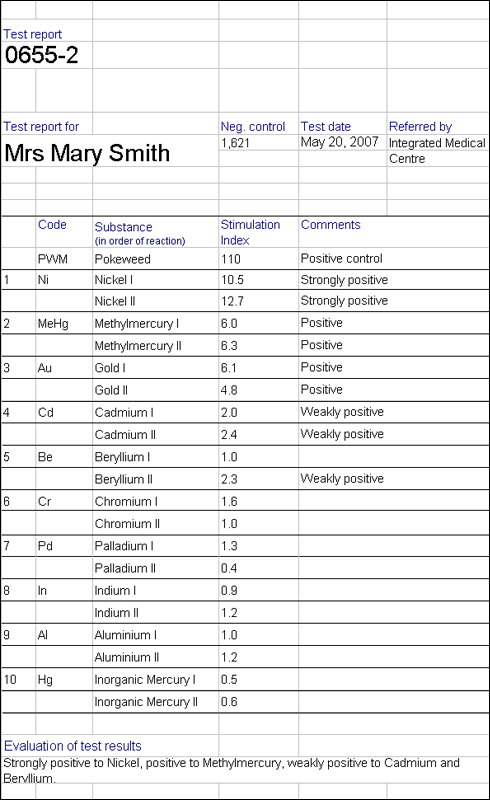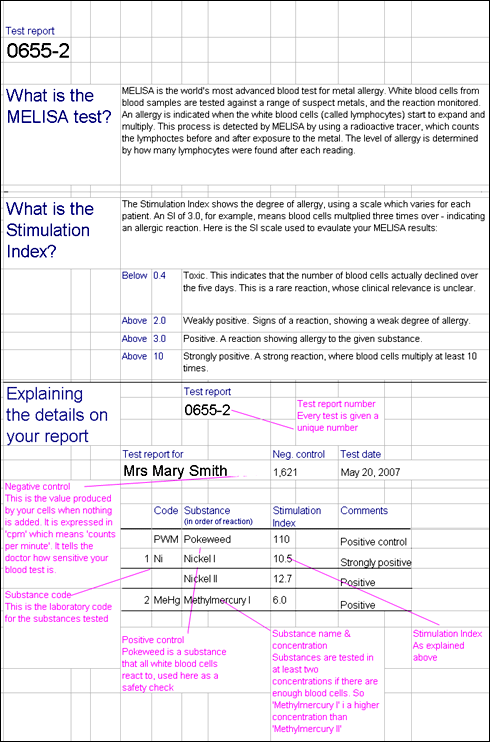Melisa
Sample report
This is an example of how the MELISA test results might be presented. Each laboratory will have its own particular report format and the language used may vary.
To help interpret results from MELISA testing, here are some pointers of what to look for:
The higher the Stimulation Index, the stronger the reaction to the allergen. A value of 2-3 is usually regarded as a weakly positive reaction (borderline allergy), a value over 3 is a positive reaction (allergy found) and a value over 10 is a strongly positive allergy. The negative control is the normal reactivity of the blood sample, without any substance added to the cells. Normal values are between 1000-3000 cpm (counts per minute). If the value is higher, this could mean that the patient is fighting an infection and that the cells are more reactive than they would normally be. The positive control is a substance that all patients should react to. Normal values are anything over Stimulation Index 100. If this value is low, that is under 50, there is a possibility that the patient is immuno-suppressed (by medication, for example) and that the reactions to the metals would normally be higher.
A graph on page 2 is showing the Stimulation Index and the metals tested. A value over 3 is regarded as a positive result (definite allergy) and a value over 10 strongly positive (strong allergic reaction).


